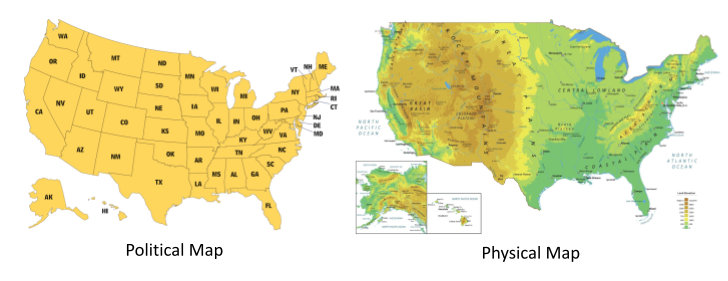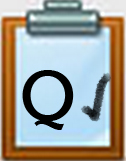Q4 Abstraction: Introduction
Introduction
In this Quest, you will explore the concept of abstraction and learn how to focus only on the important details when solving a problem.
Abstraction is one of the most challenging stages of computational thinking. It enables programmers to simplify complex problems by hiding unnecessary details and focusing on only the relevant information, thereby making their programs more efficient.
Play the video below. Think about how the ideas of abstraction relate to your ideas of learning. Be prepared to discuss with your classmates.
Computer Science Concept - Abstraction
Direct link (1:11 min.)
In the video, they talk about maps and abstraction. If someone wants to find all 50 states, they use a political map. This type of map only shows states, cities, and countries, without detailing features such as rivers, lakes, or mountains. Those details are hidden because they aren't needed for finding state locations. A physical map, however, serves a different purpose—it helps people visualize land features such as mountains, rivers, and terrain.

Maps are from the gisgeography.com website and are used for educational purposes only.
When solving a complex problem, it's essential to find the simplest approach while retaining the key details. For example, when researching online, you select the best keywords to find the most relevant information. When giving a presentation, you focus on the main points. Too many extra details can be distracting.
Learning Objectives:
I can:
- Understand abstraction.
- Hide details that are needed.
Competencies & Standards
MITECS Michigan Integrated Technology Competencies for Students, and
5. Computational Thinker
a. Students formulate problem definitions suited for technology-assisted methods such as data analysis, abstract models and algorithmic thinking in exploring and finding solutions.
b. Students collect data or identify relevant data sets, use digital tools to analyze them, and represent data in various ways to facilitate problem-solving and decision-making.
Websites and Documents
Websites




